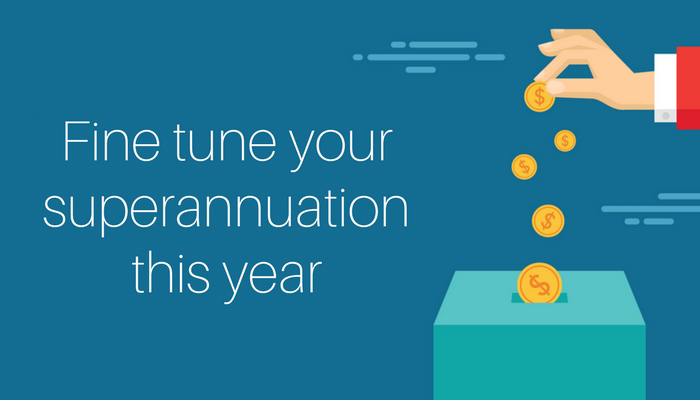If you haven’t already reviewed your superannuation following last year’s changes, it’s time to take action. Not only are you likely to be affected in some way, but more changes are coming this year.
Some of the most significant changes last year were felt the most by those with high balances in their funds, and employees who salary sacrifice into super.
For the former, a ‘transfer balance cap’ was introduced from 1 July 2017 limiting the amount that could be transferred to a retirement phase income stream, such as an account-based pension, to $1.6 million. The balances of existing income streams held at 30 June 2017, and the starting values of any commenced since then, counts towards this cap.
Amounts over $1.6 million must be transferred back to an accumulation phase super account or withdrawn from super. Otherwise a penalty tax will be applied, effectively removing the tax advantage of leaving the funds in the pension phase and in some cases providing further penalty.
Salary sacrifice1 is used by many people to increase their super fund balances by having some of their salary paid directly into super in addition to the employer’s compulsory contributions. Salary sacrifice payments are concessional (before-tax) contributions and the cap on concessional contributions2 has been reduced to $25,000.
Changes to the deductibility rules around making personal contributions means people may also be able to claim a tax deduction for making personal contributions towards their retirement.
For example, since 1 July 2017, employees can take advantage of the removal of the 10 per cent self-employment test to be eligible to make personal tax-deductible (concessional) contributions into superannuation.
Under the new rules, just about anyone who is eligible to contribute can make year-end personal superannuation contributions and claim a tax deduction for it.
Estate planning
In light of the new changes, it’s also time to review your life insurance and estate planning arrangements. Especially because the $1.6 million cap on funds held in retirement phase also applies to death benefit income streams.
After-tax contributions
Meanwhile, the cap for non-concessional (after-tax) contributions has also been reduced from 1 July 2017. It’s now $100,000 per year but a ‘bring forward3’ rule applies, allowing you (if eligible) to pay three years’ worth of contributions (or $300,000) in a single year.
There is also a new restriction on making non-concessional contributions for people with high super balances. If a person has a total superannuation balance (just prior to a financial year) of between $1.4 million and $1.6 million, the amount they can contribute will be reduced. If someone has $1.6 million or more, they will not be able to make any non-concessional contributions.
So you may need to check your super balances before making any contributions under the new rules.
Talk to a financial adviser before you make any decisions, because there are still many benefits from having a transition to retirement income stream.
Transition to retirement
Another big change in 2017 was to apply a 15% tax to investment returns on assets supporting transition to retirement income streams4 (TRIS) where the member has yet to retire (or meet another eligible condition of release). These investment returns had previously been tax-free.
For people with a TRIS who are still working and salary sacrificing extra amounts into super, it’s important to make sure you’re aware of how the changes, including the reduction to the concessional cap, may affect your retirement strategy.
The biggest changes for 2018
Two of the biggest and most radical changes to superannuation are coming this year – downsizer super contributions and the first home super saver scheme.
The first allows people aged 65 or more who sell their homes to make extra contributions to their super of up to $300,000. The home must have been the person’s primary residence at some time and must have been owned for at least 10 years. Normal contribution rules (eg having to be under 75 and meet a work test) and other contributions caps don’t apply.
It’s important to note that the rule only applies where the contract of sale of the relevant property is exchanged on or after 1 July 2018 and the contribution is then made within 90 days of settlement.
Savings boost for first home buyers
First home buyers haven’t been forgotten in the raft of super changes with a new rule allowing them to make extra contributions to their super, up to $15,000 per year to a maximum of $30,000.
When they’re ready to buy, they’ll need to apply to the Australian Taxation Office for the funds to be released. They’ll generally have up to 12 months to buy a property using the funds.
For those making additional contributions, they’ll get the benefit of the concessional tax rates in superannuation for any investment earnings.
Get in touch with us to see how the changes affect you. You can also read information about the rules from the Australian Taxation Office.


